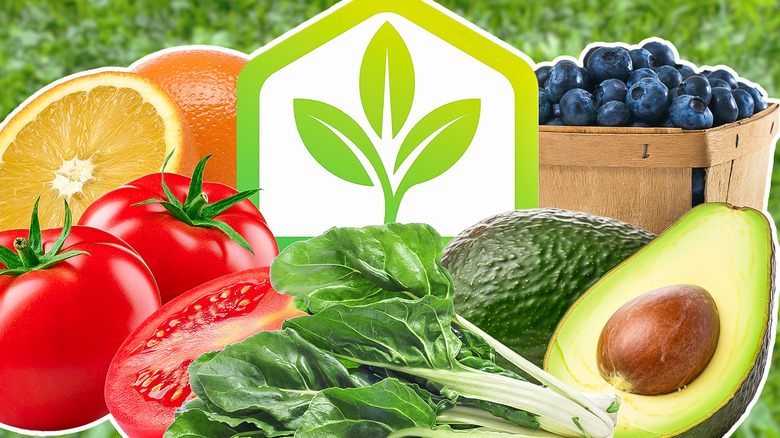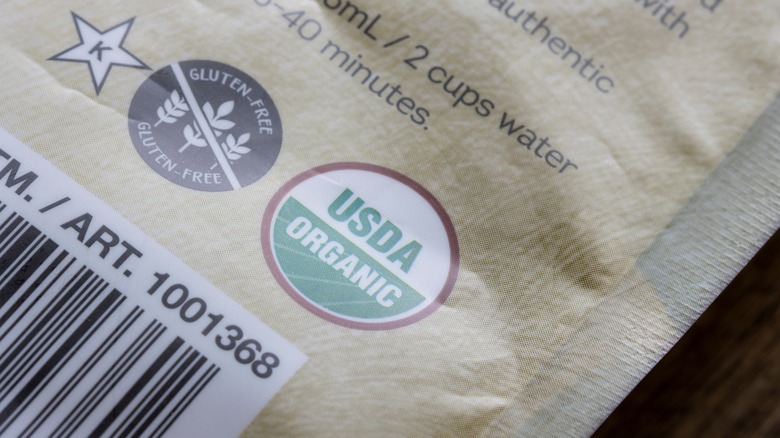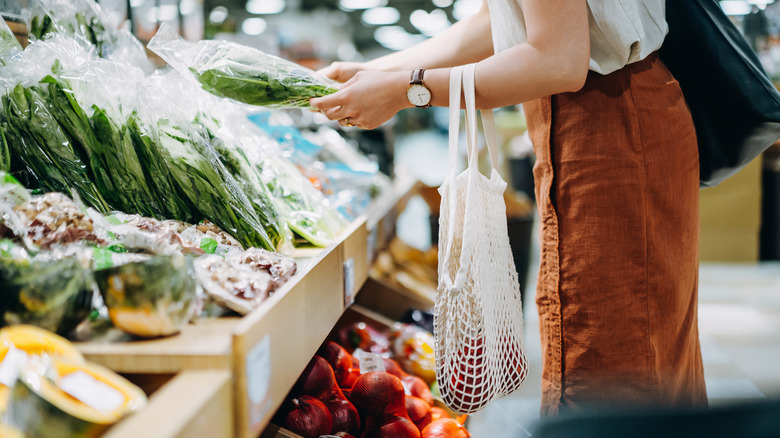What Does Organic Actually Mean In The Food World?
A single word on a label can be the difference between what we spend our food budget on and what we pass over. Unfortunately, food labels are notoriously misunderstood by the public, causing great confusion over things like use-by vs. expiration dates and what "natural flavor" actually means. Of all the terms to know, arguably none carry more weight than "organic." Food manufacturers love to use it as a selling point, often implying that it denotes a healthier choice (not to mention carrying a heftier price tag). In a nutshell, "organic" refers to foods produced without synthetic measures. That means produce grown without synthetic fertilizers or pesticides and livestock raised without hormones or antibiotics (a few exceptions apply, as we'll get into later on). Organic methods also exclude the use of genetically modified organisms (GMOs), bioengineering, and ionizing radiation (which is used to cause desired genetic mutations).
These techniques harken back to pre-industrial farming methods, but they took on new significance in the early 20th century as industrialization reshaped the agricultural industry. The term "organic" was first applied to agriculture in the 1940 book "Look to the Land" by the English author and agriculturalist Lord Northbourne, who laid the early groundwork for modern organic agriculture. In the 1960s, reports emerged revealing that the commonly-used pesticide DDT was carcinogenic. This fomented great public concern about the chemicals used in farming and prompted a wave of legislation over the latter half of the 1900s that would eventually lead to the modern USDA organic certification.
How the USDA organic seal works
In the United States, you can easily identify certified organic products in the grocery store because they carry the USDA organic seal. The requirements for the seal are established by the National Organic Program, which sets the federal standards for organic foods. Under these regulations, produce can earn the organic seal if it is grown in soil free from all prohibited substances, including most synthetic pesticides and fertilizers. To keep pests at bay, organic farmers use methods that emulate natural deterrents, such as practicing crop rotation or introducing predatory insects that prey on would-be pests.
There are a small number of synthetic products permitted for use in organic farming, as detailed in the National List of Allowed and Prohibited Substances, such as plastic mulch. These exceptions are strictly vetted for nutritional and environmental impact. The USDA may also apply an organic seal to livestock products such as meat, dairy, and eggs, as long as the livestock are raised on an organic diet with access to a pasture and have no antibiotics or hormones applied.
To earn an organic seal, foods must be certified by a USDA-accredited certifying agent. There are more than 70 agencies accredited by the USDA to certify organic foods, including state departments of agriculture and international agencies that can certify foods imported to the U.S.
Is organic food healthier than non-organic food?
Organic food is often presented as a healthier option than non-organic food, but the matter isn't quite so cut and dry. The assertion could even be considered a food "fact" that isn't actually true. Studies comparing the two have found that organic foods do not have a significant nutritional advantage over non-organic foods, at least when it comes to the amount of vitamins, minerals, and other nutrients present in the food. Non-organic foods may have traces of synthetic pesticides, but these are also tightly regulated. For instance, today, DDT is banned in all farming, organic or not. Furthermore, it's unclear whether the pesticides allowed in organic farming are actually safer than their synthetic alternatives.
Aside from nutrition, organic foods are probably best known for carrying high price tags. They are almost always more expensive than their non-organic counterparts, with research from CNET indicating that organic foods can cost 21% more, the greatest difference coming in the meat department. The price disparity exists in part because organic farming practices require more labor, and organic farms generally operate on a smaller scale than non-organic farms, producing less output. Despite costing more on average, organic foods have shown steady growth in sales throughout the 21st century, and it's clear that this is not just some trendy food fad. This is the way of the future, at least for customers who can afford it.


